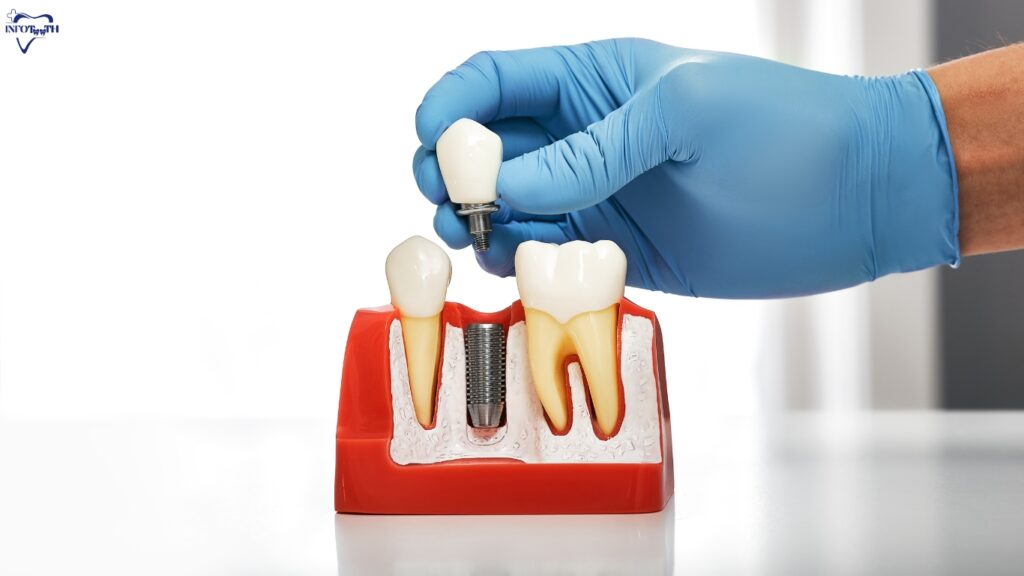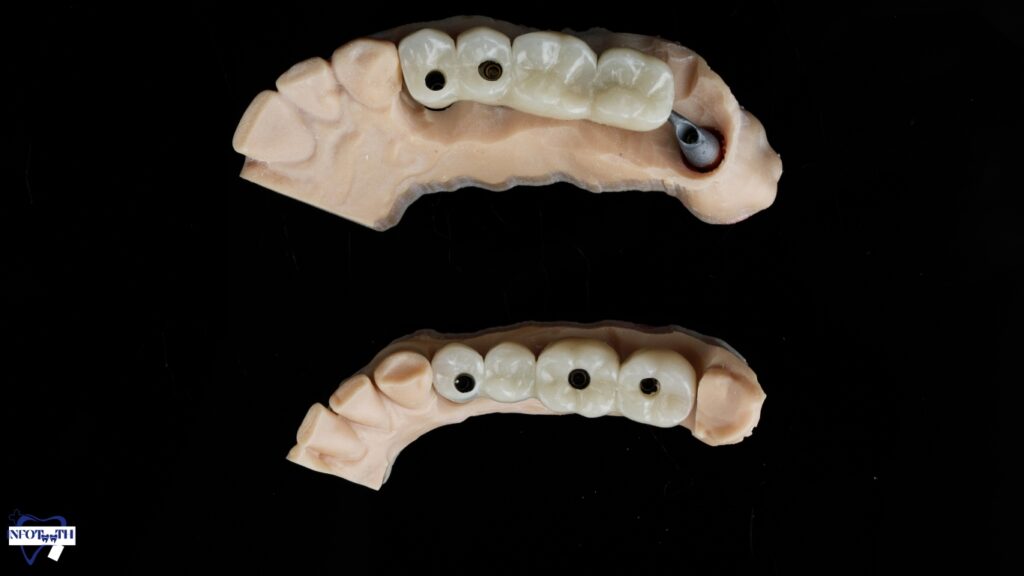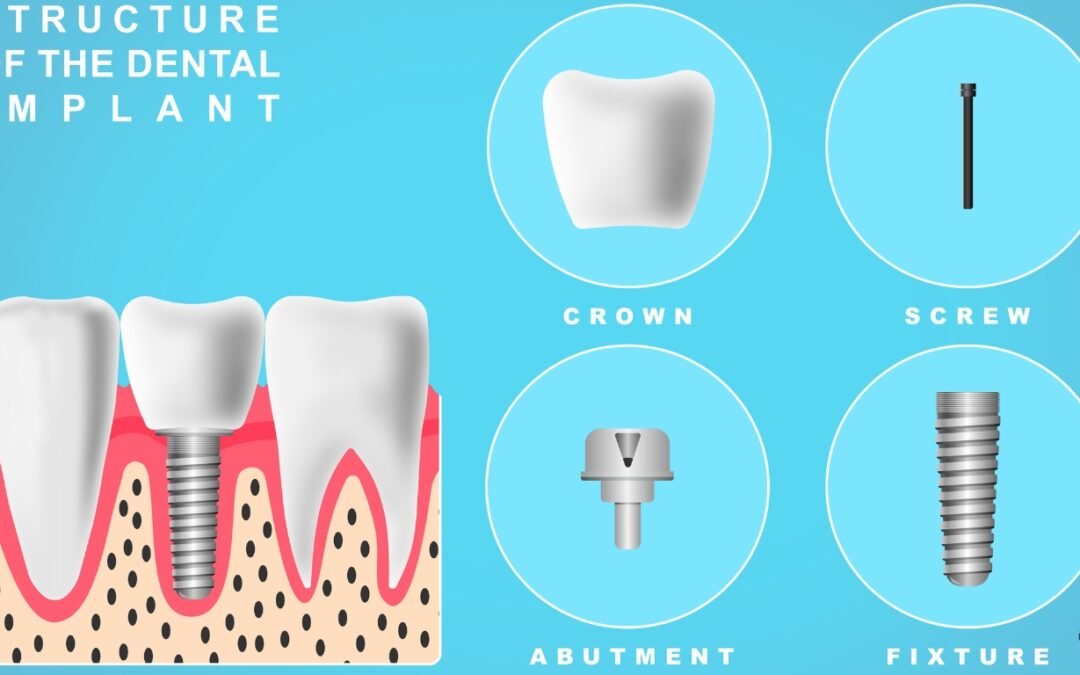Can one implant replace two teeth? A vital component of our general health is oral health, and new developments in dental technology have created more options for tooth replacement. One such innovation that sparks interest is the concept of replacing two teeth with a single implant. We’ll examine the nuances of this strategy in this post, including its viability, advantages, and what patients should be aware of.
Table of Contents
Here is the description of one teeth replace with two teeth
What Is The Idea Of One implant for two teeth?
In modern dentistry, the concept of can one implant replace two teeth has drawn a lot of interest. In the past, patients who had lost two neighboring teeth might choose to have separate implants placed for each lost tooth. Nonetheless, new methods and technical developments in can one implant replace two teeth has made a more efficient solution possible.
This revolutionary idea replaces both lost teeth with a dental bridge or crown that is supported by a single implant that is positioned precisely. This lessens the influence on neighboring healthy teeth and offers a more affordable option. The prosthetic teeth are stabilized and supported by the implant, which integrates with the jawbone.

People should speak with a licensed dental practitioner to find out if they qualify for this option and to learn more about its possible benefits before making any decisions. One example of how modern dentistry is progressing is the possibility of can one implant replace two teeth, which gives patients a more practical and effective way to regain their confidence and oral health.
What Are The Advantages of Single Implant for Two Teeth?
A number of benefits make using can one implant replace two teeth an appealing option in contemporary dentistry.
Expense-effectiveness:
The cost-effectiveness is one of the main advantages. Using traditional methods, patients would have to pay more because each missing tooth would require its implant placement. Selecting, can one implant replace two teeth provides a complete solution and considerably lessens the financial strain.
Preserving Neighboring Tooth:
One implant reduces interference between surrounding teeth, in contrast to older methods where several implants may have an effect. Preserving neighboring teeth is essential for preserving dental health in general, as it avoids needless stress or harm to healthy teeth.
Better Aesthetics:
A single implant yields a more visually acceptable outcome. In order to create a unified and realistic-looking smile, the prosthetic teeth that are linked to the implant are specially made to blend in smoothly with the patient’s natural teeth. This improves the overall appearance of the face while also restoring confidence.
Restored Function:
Better biting and chewing abilities are guaranteed with a single implant for each of the two teeth. Because the implant is incorporated into the jawbone, it provides stability and support, enabling patients to take full advantage of their dental functions without experiencing any discomfort or sliding.

Simplified Process:
Selecting a single implant simplifies the process of getting dental implants in general. Patients enjoy a simpler procedure that results in less time spent in the dental chair and a shorter recovery period than two individual implant placements.
What Are The Implants For Teeth Made Of?
Biocompatible materials are usually utilized to make dental implants, with titanium being the most used type. Because of its special qualities, titanium can merge with the jawbone—a process called osseointegration. This integration gives the dental prosthesis or artificial tooth stability and support.
Certain implants contain elements other than titanium, such as zirconia, which is well-known for its beauty and body-friendly nature. The patient’s desire, the implant’s placement, and the particular needs of the dental restoration all play a role in the material selection. Can one implant replace two teeth? It is a raised question these days.
What Is The procedure For Dental Implants?
The goal of the detailed and carefully planned dental implant treatment is to replace lost teeth with a long-lasting and aesthetically pleasing alternative. An outline of the procedures involved in this revolutionary dental procedure is provided below.
- Consultation and Assessment: A thorough consultation is the first step in the trip. To ascertain whether the patient is a candidate for the procedure, the dentist evaluates the patient’s oral health, obtains X-rays, and talks about the patient’s medical history.
- Therapy Scheduling: A customized treatment plan is made in accordance with the assessment results. This involves selecting the prosthetic option—a crown, bridge, or denture—as well as the kind of implant and the quantity of implants required.
- Implant Placement: The dentist or oral surgeon inserts the implant into the mandible during the surgical stage. The selected implant, which is usually composed of titanium, osseointegrated into the bone, providing stability and long-term support.
- Healing Period: Following the implantation of the implant, the jawbone allows the implant to bond. Although it varies, this time frame is essential to the procedure’s success.
- Abutment Placement: An abutment, or connecting piece, is affixed to the implant once it has healed sufficiently. This supports the prosthetic tooth or teeth.
- Prosthetic Attachment: After that, the abutments are firmly fitted with customized prosthetic teeth, such as crowns, bridges, or dentures. These prosthetics are made to function, look, and match the patient’s real teeth.
- Follow-up Care: To monitor the healing process, make sure the implant is stable, and address any issues, regular follow-up sessions are scheduled.

How Implants For Front Teeth Works?
Front tooth implants are essential for the restoration of both appearance and functioning because they take special factors into account. After all, the front of the mouth is a visible and socially significant area. These implants act as the replacement teeth’s artificial roots. Can one implant replace two teeth is usually composed of biocompatible materials like zirconia or titanium.
The main goal of front teeth implants is to produce a natural-looking outcome. First teeth greatly influence how someone smiles and looks on their face. Thus, appearances are crucial. The materials are selected to ensure smooth integration with the surrounding dentition by closely resembling the color and translucency of real teeth.
Because front teeth implants are visible, precise placement is essential. In order to build a harmonious and appealing smile, dental practitioners concentrate on achieving optimal alignment and symmetry. For stability and lifespan, the implant’s fusing with the jawbone—known as osseointegration—is essential.
Beyond appearances, utility comes first. Because the front teeth are essential for speaking, biting, and tearing, restoring their normal function is a major goal. Front tooth implants offer the support required for biting pressures as well as a comfortable, natural-feeling experience for the patient.

How Can One Implant Replace Two Teeth For Bottom?
Bottom tooth implants are essential for regaining dental health and function since they can solve problems including missing teeth, pain, and difficulty biting and chewing food. Implants for the lower jaw are often composed of biocompatible materials like titanium, just like implants for the upper jaw. The lower jaw presents particular difficulties during the implantation process, such as variations in bone density and close closeness to nerves.
The capacity of bottom tooth implants to support and stabilize artificial teeth without affecting neighboring natural teeth is a major benefit. This is especially crucial for preserving the lower jaw’s general alignment and functionality. Through a process known as osseointegration, the titanium implants merge with the jawbone to provide a stable base.
Because the prosthetic teeth are made to match the patient’s natural teeth perfectly, patients who choose bottom tooth implants enjoy better looks. Beyond appearances, the improved functionality enables people to speak, bite, and chew with assurance and comfort.
A thorough examination, accurate implant placement, and a custom prosthetic solution are all part of the process for lower tooth implants. To ensure the success of the implantation, dental professionals carefully analyze issues, including patient appropriateness and the quality of the patient’s bone.
Conclusion
In conclusion, the idea of can one implant replace two teeth presents a viable advancement in the field of dental implants. For qualified applicants, the benefits and technological developments make it a practical and affordable choice. To determine the suitability and possible advantages of this strategy, those who are thinking about it should speak with a licensed dental practitioner.
Frequently Asked Questions
Q: What is the rate of success for two teeth with a single implant?
A: When given the right attention and aftercare, single implants for two teeth typically have a success rate. Dentists closely monitor their patients in order to address any issues swiftly.
Q: Is the process uncomfortable?
A: Although there may be some discomfort during the healing phase, the actual treatment is carried out under anesthetic, guaranteeing minimum pain. Painkillers are prescribed to patients as needed.
Q: What is the duration of the recuperation process?
A: Although it varies from person to person, the healing process usually takes a few weeks. A successful recovery depends on adhering to post-operative care instructions and making follow-up consultations.
Q: Can someone have two teeth replaced with a single implant?
A: Not every person is a good fit for this process. Oral hygiene, bone density, and general health are among the variables that affect this. A comprehensive consultation with a dentist is required to establish eligibility.
Q: What are this approach’s long-term advantages?
A: Long-term advantages include reduced costs, enhanced appearance, and functional restoration. With just one implant, patients can have a convenient, natural-looking smile.

